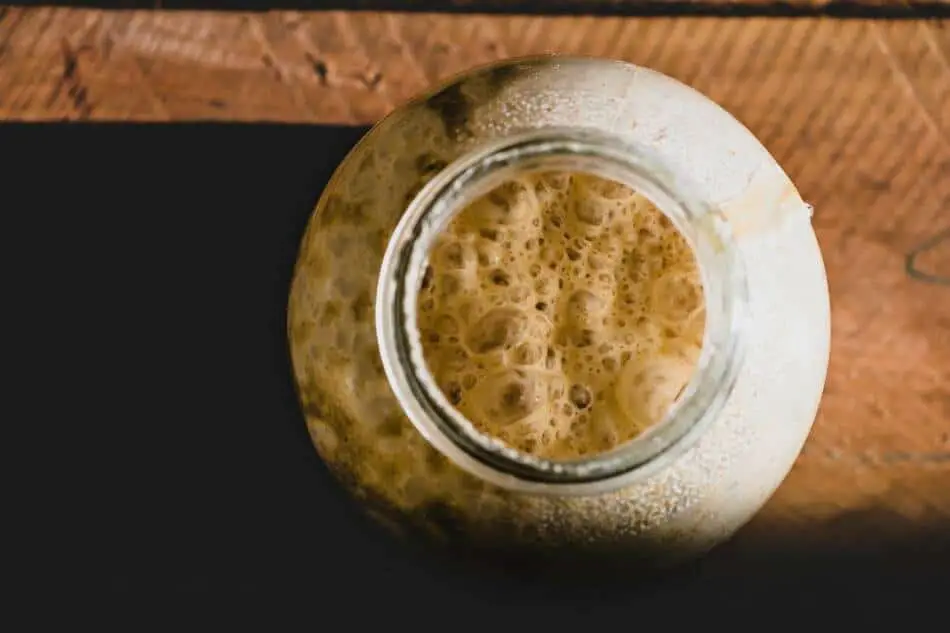Sourdough starters are fascinating. They are a living ecosystem of wild yeast and lactic acid bacteria, working together to leaven bread naturally. For those new to the world of sourdough, a frequently asked question is: Can I bake with a sourdough starter immediately after feeding it? This article dives into the details.
The optimal time to use sourdough starter is during its peak activity, typically 4-8 hours after feeding, when it has doubled in volume. This ensures a good rise and the characteristic tangy sourdough flavor. Observing the starter’s behavior and volume expansion provides the best gauge for its readiness.
1. The Lifecycle of a Sourdough Starter
Understanding a sourdough starter’s journey, from the moment it’s fed until it begins to decline in activity, provides invaluable insights into its behavior and the best times to use it for baking.
a. Feeding Stage
Just like any living organism, the yeast and bacteria in your starter need sustenance to thrive. The act of feeding them with fresh flour and water introduces new food, setting the stage for increased activity. This is the beginning of a fresh lifecycle, a reset button for your starter.
b. Rising Phase
Fueled by the new supply of food, the microorganisms spring into action. As they digest the flour, they release carbon dioxide, leading to the starter’s expansion. During this phase, the starter is a flurry of microbial activity, and you might witness it doubling or even tripling in volume.
c. Mature Phase
After 4-8 hours post-feeding, the starter reaches its zenith, a period where it’s said to be “at its peak.” During this mature phase, it exhibits the perfect combination of leavening power and flavor depth, making it an ideal ingredient for bread-making.
d. Decline Phase
But nothing lasts forever. Once the readily available food starts to deplete, the microorganisms’ fervor begins to wane. The starter enters a phase of reduced activity, with less gas production and a gradual decline in volume.
2. The Optimal Time To Use
When baking with sourdough, timing your starter’s use can be the difference between a lofty, flavorful loaf and a dense, lackluster one.
a. Peak Activity

Most traditional sourdough bread recipes advocate using the starter when it’s at its prime, which is the mature phase mentioned earlier. Depending on various factors, like room temperature, feeding ratio, and the starter’s inherent vitality, this peak often materializes between 4 to 8 hours post-feeding.
b. Observation Over Presumption
While timing is a useful guideline, the starter’s behavior is the real barometer. A starter that’s visibly bubbly, has increased by at least 1.5x its original volume, and exhibits a pleasant, tangy aroma within a few hours might be exhibiting signs of robust activity, making it potentially ready for use. Nonetheless, for the most reliable outcomes in terms of both rise and flavor, allowing the starter to fully double in volume is a tried-and-true method.
c. Determining Your Sourdough Starter’s Peak Time
Sourdough starters can vary in strength. To determine your starter’s peak timing, a handy tip to track your starter’s progress is using a rubber band or a marker to indicate its level right after feeding. Mark the highest level of the starter on the jar every 2 hours post feeding to track its growth.
By doing this, helping you pinpoint the timing of its peak without guesswork. This simple trick can be especially beneficial for beginner bakers, offering a clear visual cue.
3. The Downside of Using Starter Immediately After Feeding
Using a starter immediately after feeding means it’s in the early stages of its lifecycle. Here’s why it might not be the best idea:
a. Lack of Rise
Freshly fed starters are just kick-starting their fermentation process. The yeast and bacteria in them are only beginning to metabolize the new food sources, and they haven’t had the opportunity to produce significant amounts of carbon dioxide. This limited gas output translates to breads that may end up dense, lacking the desired rise.
b. Milder Flavor
The iconic sourdough taste comes from a combination of organic acids produced during fermentation, with lactic and acetic acids being the primary contributors. A starter that’s immediately used post-feeding hasn’t had enough fermentation time, resulting in bread with a milder, less tangy flavor.
4. Using Starter Immediately After Feeding Might Work
While using a starter right after feeding isn’t generally ideal for traditional sourdough loaves, there are times when it can be appropriate:
a. Recipes with Additional Leavening Agents

Certain recipes come with built-in safety nets in the form of other leavening agents. Whether it’s commercial yeast, baking powder, or baking soda, these ingredients can compensate for the lack of immediate rise from a just-fed starter. So, if you’re crafting a bread that leverages these agents, the urgency for a fully fermented starter diminishes.
b. Prioritizing Flavor over Fermentation
Not all recipes demand a sky-high rise from your starter. For dishes like pancakes, waffles, or certain flatbreads, the primary contribution of the sourdough starter might be its unique flavor rather than its leavening prowess. In such scenarios, using a starter that’s fresh off a feeding can infuse the desired sourdough taste without the necessity for a pronounced rise.
In Conclusion
While it’s tempting to dive into baking immediately after feeding your starter, patience often yields the best results in the sourdough world. By understanding the lifecycle of your starter and aligning your baking schedule with its peak activity, you can ensure optimal flavor, texture, and rise in your baked goods.

